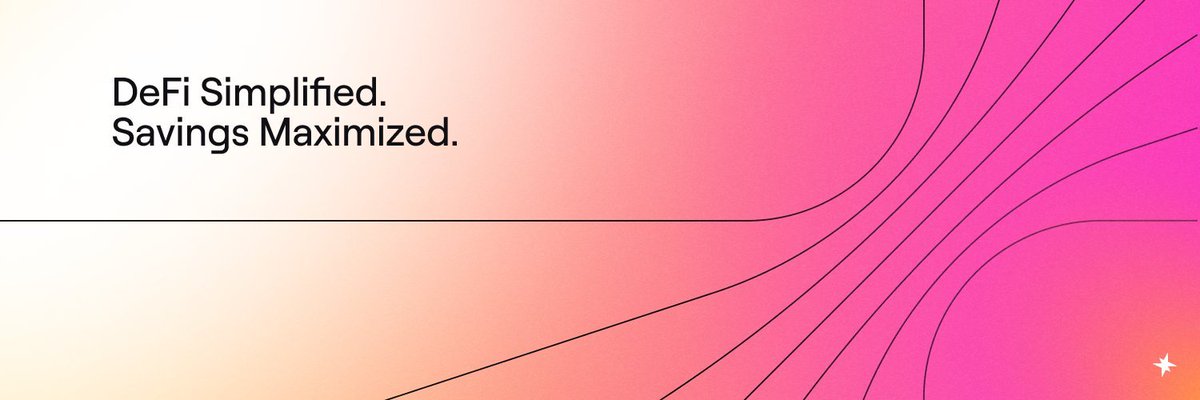How to Use SparkFi: Full Breakdown of Saving, Borrowing, and Liquidity Modules
In our previous article ( ), we explored the overall positioning of SparkFi ( @sparkdotfi ) as more than just a lending protocol — it’s a decentralized capital coordination center. This “coordination ability” is delivered through its three core modules:
Saving, Borrowing, and the Liquidity Layer
Let’s dive deep into how each module works, what value it offers, and why Spark stands out in the DeFi landscape.
1. Saving Module: Foundation for Stable Yield
Spark offers a simple yet efficient way to earn passive income. Users can deposit DAI or USDC into Spark’s saving vaults and earn stable yields (around 4.5% APY).
✅ Key Features:
(1) No risk entry — no collateral or leverage required
(2) Transparent and stable rates governed by the Sky DAO
(3) Yield is generated through MakerDAO’s DSR and Spark’s liquidity reallocation
Best for: Users who want a simple “deposit and earn” experience without active management.
2. Borrowing Module: Collateral-Backed Loans with USDS
One of Spark’s core features is collateralized borrowing. Users can supply blue-chip assets to borrow USDS, Spark’s native stablecoin.
Accepted Collateral Types:
(1) ETH, stETH, cbETH, rETH, wstETH (Ethereum-based LSD assets)
(2) MKR (governance token)
(3) DAI (Maker ecosystem stablecoin)
Borrowed Asset: USDS
Key Features:
(1) Collateral ratios and liquidation thresholds are governed by Sky DAO
(2) Lower borrowing costs compared to Aave, tailored for long-term asset holders
(3) Liquidation handled by Chainlink Oracles or equivalent systems
Best for: Users with long-term LSD or blue-chip holdings who need stable liquidity.
3. Liquidity Layer: Capital Routing Logic for DeFi
This is what truly differentiates Spark from other platforms. Spark doesn’t just manage internal liquidity — it routes surplus DAI/USDC to external protocols like Aave V3 across multiple deployments.
The logic: you deposit stablecoins into Spark, and Spark selectively allocates part of that capital to external markets, generating additional yield — which is returned to you.
Current integrations include:
(1) Aave Prime
(2) Aave Core
(3) Aave Base
How It Works:
(1) Spark evaluates risk and deploys excess capital where yield is optimal
(2) Yield generated is redistributed back to users
(3) All flows are fully transparent and traceable on-chain
Best for: DeFi-native users who prioritize long-term capital efficiency through composability and protocol-level yield.
4. Combined Strategies: Looping to Maximize Yield
Saving Strategy
(1) Action: Deposit DAI / USDC
(2) Risk Level: Very Low
(3) Yield: ~4.5% stable APY
Borrowing Strategy
(1) Action: Supply ETH or LSDs → borrow USDS
(2) Risk Level: Medium (volatility + liquidation)
(3) Yield: Unlocks liquidity for other uses
Loop Strategy
(1) Action: Deposit + Borrow + Re-deposit
(2) Risk Level: Medium-High
(3) Yield: Maximized through compounding and leverage
Strategy Overview: Spark Use Cases by Risk & Return
Example Strategy:
(1) Deposit wstETH as collateral → borrow USDS
(2) Deposit USDS into Spark’s Saving Vault
(3) Earn stable yield while retaining your ETH exposure
This is a classic DeFi loop strategy to optimize both leverage and yield.
5. How Spark Compares to Aave / Compound
Product Design
(1) Spark: Combines saving, lending, and external capital routing
(2) Aave/Compound: Primarily lending-focused protocols
Capital Utilization
(1) Spark: Actively deploys excess funds into external protocols like Aave
(2) Aave/Compound: Funds stay within the protocol
Yield Model
(1) Spark: Governed interest rate model tied to DSR, not fully market-driven
(2) Aave/Compound: Fully supply-demand market-based rate dynamics
Ecosystem Support
(1) Spark: Backed by MakerDAO and Sky Protocol
(2) Aave/Compound: Run by independent protocol communities
~~~~
What’s Next: $SPK Token and Airdrop Strategies
Now that you understand Spark’s architecture and modules, our next article will explore:
(1) Has the $SPK token launched?
(2) How does the current “airdrop season” work?
(3) What strategies are best for earning governance rewards?
Stay tuned.

Getting Started with #SparkFi: A DeFi Hub for Lending, Earning, and Capital Coordination
In May 2025, ( @cookiedotfun ) launched its first official partner project — ( @sparkdotfi ), instantly attracting the attention of airdrop hunters and DeFi enthusiasts alike. But what exactly is Spark? How is it different from traditional lending platforms? And why was it chosen as Cookie’s debut highlight?
This article walks you through everything you need to know about — its positioning, background, current metrics, and future potential.
1. What is ?
Put simply, Spark is a decentralized capital coordination platform. It aggregates stablecoin savings, lending, and liquidity deployment — enabling users to earn yield, access leverage, and benefit from protocol-level capital efficiency.
But Spark isn’t just another lending protocol. It’s designed as a DeFi coordination hub, offering composable yield opportunities with flexible collateralization. For example:
(1) Users can deposit USDC or DAI and earn stable yields (~4.5% APY);
(2) Or use ETH, wstETH, rETH, and similar assets as collateral to borrow USDS stablecoins;
(3) Spark routes idle funds to other protocols like Aave, boosting overall yield efficiency.
This hybrid model places Spark somewhere between Aave and Morpho Blue — positioning it as a “capital allocator” on-chain that balances yield, risk control, and liquidity optimization.
2. Who’s Behind Spark?
Spark isn’t just another new protocol — it was initiated by Sky Protocol, one of the major extensions of the MakerDAO ecosystem.
In fact, Spark is a core infrastructure product from MakerDAO, and closely tied to the $DAI ecosystem. Highlights include:
(1) Yield mechanisms linked to DAI’s Savings Rate (DSR);
(2) Governance design inspired by MakerDAO’s governance principles;
(3) Shared architecture with Maker’s internal asset allocation systems;
In terms of funding, the Sky ecosystem has raised over $61.5M USD from top-tier VCs like a16z and Paradigm.
While Spark has not yet launched its own token, the team has confirmed plans to release $SPK governance tokens, with early user activity playing a role in future airdrop allocations.
3. How is Spark Performing?
As of late May 2025, has posted some impressive metrics:
🔹 Total Value Locked (TVL): Over $2.6 billion
🔹 Savings Vault TVL: ~$1.5B (primarily DAI and USDC)
🔹 Collateral assets supported: ETH, wstETH, rETH, cbETH, and more
🔹 Integrated with Aave: Spark deploys capital into Aave markets to improve capital efficiency
🔹 Security audits: Completed by ChainSecurity and Cantina, with an active bug bounty program in place
These numbers demonstrate that Spark is no longer an experimental protocol — it has matured into a mainstream DeFi infrastructure layer.
4. Why Should You Pay Attention?
(1) It represents the evolution of “classic DeFi”
Spark is a product of MakerDAO’s next chapter — with deep liquidity, reliable governance, and stable assets. In a world filled with unaudited new protocols, Spark stands out as a “credible DeFi” platform.
(2) choice of Spark says a lot
For a rising Web3 content incentive platform, choosing Spark as its first collaboration shows a commitment to high-quality, long-term value — not just hype or memecoins.
(3) It supports both “low-effort” and “power user” engagement
Whether you’re a casual user posting to earn Snaps, or a DeFi power user seeking meaningful interaction, Spark has something for you — from zero-cost participation to deep lending strategies.
~~~~~~~~
🚀 Coming Next: How to Use Spark’s Core Modules?
In our next article, we’ll break down the actual mechanics of Spark, including:
(1) How is yield calculated and distributed?
(2) How can users participate — via “zero farming” or “real capital deployment”?
(3) What are Spark’s unique innovations compared to other DeFi lending protocols?
Stay tuned.

61
54.81K
The content on this page is provided by third parties. Unless otherwise stated, OKX is not the author of the cited article(s) and does not claim any copyright in the materials. The content is provided for informational purposes only and does not represent the views of OKX. It is not intended to be an endorsement of any kind and should not be considered investment advice or a solicitation to buy or sell digital assets. To the extent generative AI is utilized to provide summaries or other information, such AI generated content may be inaccurate or inconsistent. Please read the linked article for more details and information. OKX is not responsible for content hosted on third party sites. Digital asset holdings, including stablecoins and NFTs, involve a high degree of risk and can fluctuate greatly. You should carefully consider whether trading or holding digital assets is suitable for you in light of your financial condition.

